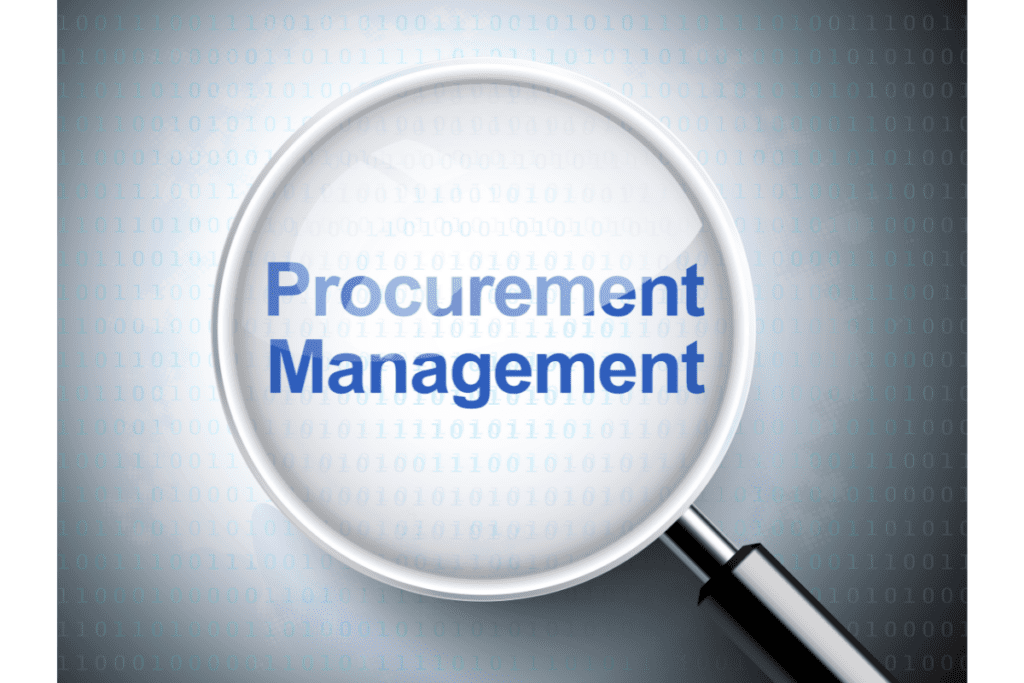Direct vs Indirect Sourcing: Is there a Difference between Direct and Indirect Procurement
When it comes to sourcing and procurement, there may be some confusion regarding the terms “direct and indirect.” Is direct vs Indirect sourcing and procurement the same thing? Can indirect sourcing be used interchangeably with indirect procurement? In this article, we will unravel the distinctions between these terms and shed light on their differences.
Are “Direct and Indirect Sourcing” and “Direct and Indirect Procurement” Synonymous?
Before we delve into the definitions and examples of direct and indirect sourcing and procurement, it is important to understand their distinctions.
While these terms may sound similar, they represent different aspects of the procurement process.
Both terms, “direct vs. indirect sourcing” and “direct vs. indirect procurement,” are used in the industry, but they have slightly different connotations. To a Chief Procurement Officer (CPO), the distinction is important.
By reading this article, you will gain a clear understanding of direct vs indirect sourcing, as well as direct and indirect procurement. You will also learn about the key elements and examples of each of these processes. This knowledge will be valuable in effectively managing your procurement activities and optimizing your supplier relationships.
5 Key Takeaways
- While related, direct and indirect sourcing are not synonymous with direct and indirect procurement.
- The main difference between direct and indirect procurement lies in the nature of the products or services being procured.
- Direct procurement deals with goods or services that are directly involved in the production process.
- Indirect procurement focuses on goods or services that support the overall operation of a business.
- Direct sourcing acquires raw materials from manufacturers, while indirect sourcing obtains essential services or goods for business operations.
- Both direct and indirect sourcing and procurement are essential components of effective supply chain management.
Sourcing vs. Procurement: Unraveling the Distinctions
To understand direct vs indirect sourcing and procurement, we must first unravel the distinctions between sourcing and procurement itself. Sourcing refers to the process of identifying and selecting suppliers that can provide the required goods or services. It involves activities such as supplier evaluation, negotiation, and contracting.
On the other hand, procurement encompasses the entire process of acquiring goods or services, from sourcing to payment. It includes planning, budgeting, purchasing, and managing supplier relationships. Procurement teams are responsible for ensuring that the right products or services are obtained at the right time, in the right quantity, and at the right price.
 What is Direct Procurement vs Indirect Procurement?
What is Direct Procurement vs Indirect Procurement?
Direct procurement involves the acquisition of goods or services that are directly incorporated into the production process. These products or services are essential for the creation of the final product or service that a company offers to its customers. Examples of direct procurement include raw materials, machinery, and components.
Indirect procurement, on the other hand, focuses on the acquisition of goods or services that are not directly involved in the production process but are necessary to support the overall operation of a business. These include office supplies, maintenance services, and IT equipment. Indirect procurement is commonly referred to as “operational procurement” or “non-production procurement.”
The key difference between direct and indirect procurement lies in the nature of the goods or services being procured. Items essential for creating the final product fall under direct procurement, while items supporting a business’s daily operations come under indirect procurement.
Direct Procurement: Definition and Examples
Direct procurement involves the sourcing and procurement of goods or services that are directly used in the manufacturing process. These items are crucial for the production of the final product. Examples of direct procurement include raw materials, components, machinery, and specialized equipment.
For example, a car manufacturer needs to source and procure raw materials such as steel, rubber, and plastic that are necessary for the production of the vehicles. The car manufacturer also needs to procure specialized equipment, such as robotic assembly machines, to facilitate the manufacturing process. These items fall under the category of direct procurement.
Indirect Procurement: Definition and Examples
Indirect procurement, also known as non-production procurement or operational procurement, involves the sourcing and procurement of goods or services that are not directly used in the manufacturing process but are essential for the day-to-day operations of a business. Examples of indirect procurement include office supplies, IT equipment, maintenance services, and marketing services.
For instance, a software development company needs to source and procure office supplies such as stationery and furniture to ensure a well-equipped work environment for its employees. The company may also need to procure IT equipment, such as computers and servers, to support its technological infrastructure. These items are considered indirect procurement.
Direct versus Indirect Procurement
There are several key differences between direct and indirect procurement. The main distinction lies in the nature of the goods or services being procured. Direct procurement deals with items that are directly involved in the production process, while indirect procurement deals with items that support the overall operation of a business.
Another difference is the level of involvement of procurement professionals. Direct procurement often demands specific industry expertise. The procurement team must deeply understand the technical specifications and requirements of the goods or services they source. Indirect procurement, on the other hand, may involve a broader range of goods or services and may require a more diverse set of procurement skills.
Furthermore, the procurement strategy for direct and indirect procurement may differ. Direct procurement prioritizes long-term supplier relationships and strategic sourcing because the quality and reliability of goods or services influence the final product. Conversely, indirect procurement often emphasizes cost management and supply chain efficiency since the procured goods or services don’t directly affect the final product.
What are the Key Differences Between Direct vs Indirect Sourcing?
Now that we understand direct and indirect procurement, let’s explore the concepts of direct and indirect sourcing. While sourcing and procurement are closely related, they have distinct roles in the overall procurement process.
Direct Sourcing: Definition and Examples
Direct sourcing refers to the process of identifying and selecting suppliers that can provide the required goods or services directly involved in the production process. It involves activities such as supplier evaluation, negotiation, and contracting. The goal of direct sourcing is to ensure a reliable and cost-effective supply of the essential items for the creation of the final product.
For example, a clothing manufacturer needs to source and select suppliers that can provide high-quality fabrics, buttons, and zippers for their garments. The manufacturer may evaluate different fabric suppliers based on factors such as quality, price, and reliability. The selection process may involve negotiations and contractual agreements to establish a long-term supplier relationship.
Indirect Sourcing: Definition and Examples
Indirect sourcing, similar to indirect procurement, focuses on the process of identifying and selecting suppliers that can provide the goods or services that support the overall operation of a business. These items are not directly involved in the production process but are necessary for the smooth functioning of the business.
For instance, a retail company needs to source and select suppliers for office supplies, such as pens, papers, and printers. The company may also need to source suppliers for maintenance services, such as cleaning and repairs. The goal of indirect sourcing is to ensure a reliable and cost-effective supply of the items needed to support the day-to-day operations of the business.
Difference between Direct and Indirect Sourcing
The main difference between direct and indirect sourcing lies in the nature of the goods or services being sourced. Direct sourcing focuses on the identification and selection of suppliers that can provide the essential items directly involved in the production process. Indirect sourcing, on the other hand, focuses on the identification and selection of suppliers that can provide the items necessary to support the overall operation of a business.
While both direct and indirect sourcing play important roles in the procurement process, direct sourcing often involves more complex selection criteria and requires a deeper understanding of the technical specifications and requirements of the goods or services being sourced.
FAQs
Q: What is the difference between direct and indirect sourcing?
Direct sourcing refers to the process of procuring products and services that are used directly in the production of goods or delivered to end customers. Indirect sourcing, on the other hand, involves the procurement of goods and services that support the operations of a business but do not directly contribute to the final product or service.
Q: What is a supplier in the context of direct and indirect sourcing?
A supplier is a company or individual that provides goods or services to another organization. In the context of direct and indirect sourcing, suppliers play a crucial role in providing the necessary inputs for both types of procurement.
Q: What is the procurement process?
The procurement process refers to the procedures and activities involved in acquiring goods and services from external sources. It typically includes steps such as identifying needs, supplier selection, negotiation, contract management, and fulfillment.
Q: What is a purchase order?
A purchase order is a document issued by a buyer to a seller, indicating the types, quantities, and agreed-upon prices of products or services to be purchased. It serves as a legally binding agreement between the buyer and the supplier.
Q: What is spend management?
Spend management is the practice of actively managing and controlling an organization’s expenditures. It involves analyzing and optimizing the company’s spending to achieve cost savings, increase efficiency, and improve overall financial performance.
Q: What is the difference between direct and indirect procurement?
Direct procurement focuses on the sourcing and acquisition of goods and services that are directly used in the production process or delivered to end customers. Indirect procurement, on the other hand, deals with the acquisition of goods and services that support the operations of a business but do not directly contribute to the final product or service.
Q: What is procurement software?
Procurement software refers to a set of digital tools and applications designed to streamline and automate various aspects of the procurement process. It can include functionalities such as supplier management, purchase order generation, contract management, and spend analysis.
Q: What is the indirect procurement process?
The indirect procurement process involves the acquisition of goods and services that do not directly contribute to a company’s core products or services. It includes activities such as identifying needs, sourcing suppliers, negotiating contracts, and managing the purchasing process.
Q: What are the procurement challenges?
Procurement faces various challenges, including supplier management, cost control, supply chain disruptions, regulatory compliance, and ensuring the quality and reliability of purchased goods or services.
Q: What is the role of the procurement function?
The procurement function within an organization is responsible for managing the entire procurement process. This includes identifying needs, selecting suppliers, negotiating contracts, managing relationships, and ensuring the timely delivery of goods and services.
Conclusion
In conclusion, direct and indirect sourcing are not synonymous with direct and indirect procurement. The main difference lies in the nature of the goods or services being sourced and procured. Direct sourcing and procurement focus on items directly involved in the production process, while indirect sourcing and procurement deal with items that support the overall operation of a business.
Understanding these differences is crucial for effective procurement and supplier relationship management. By leveraging the appropriate sourcing and procurement strategies, businesses can optimize their supply chain processes, effectively manage their direct and indirect spending, and ensure the timely acquisition of the goods and services they need to succeed.
If you liked this article, remember to subscribe to MiamiCloud.com. Connect. Learn. Innovate.






